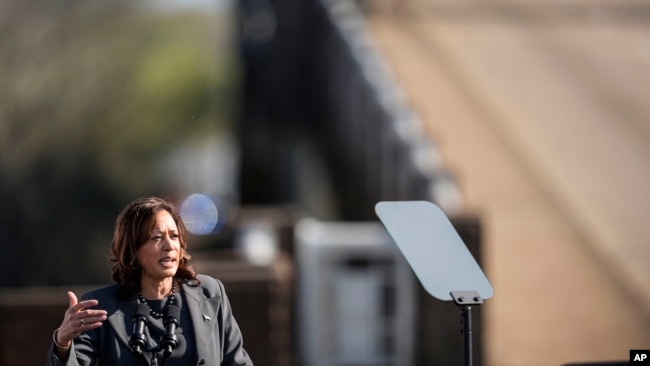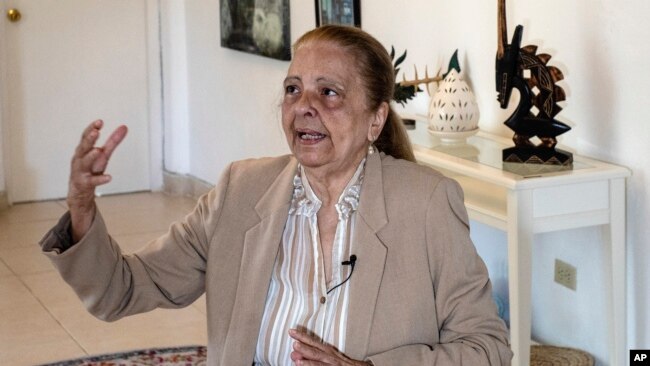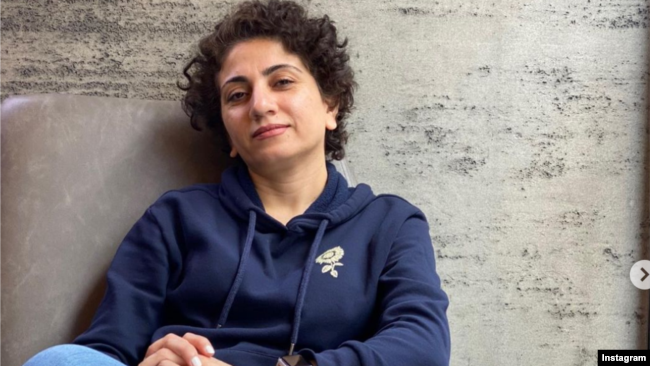뜨거운 바닷물로 플로리다의 대부분의 경작된 산호가 죽습니다
Hot Seawater Kills Most of Cultivated Coral in Florida Keys
페이지 정보
작성자 By Associated Press 작성일 24-02-17 03:00 댓글 0본문
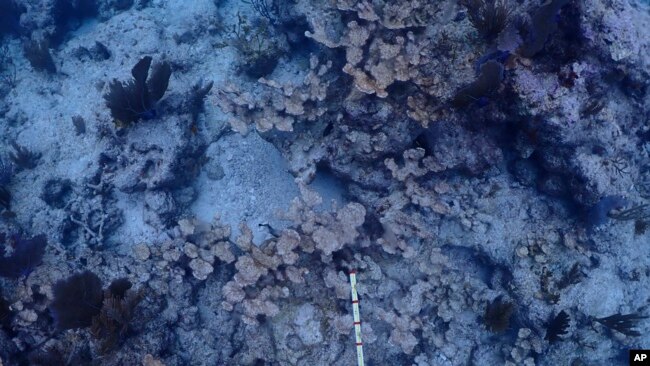
미국 국립해양대기청이 제공한 이 이미지는 2024년 2월 9일 플로리다 주 키 라르고 북동쪽의 캐리스포트 리프에서 죽은 엘크혼 산호를 보여줍니다.
This image provided by the National Oceanic and Atmospheric Administration shows dead elkhorn coral on Feb. 9, 2024, at Carysfort Reef, northeast of Key Largo, Fla.
기록적인 뜨거운 바닷물이 기후 변화에 매우 취약한 위협적인 종을 지탱하기 위해 과학자들이 최근 몇 년 동안 플로리다 키에 놓아둔 인간이 재배한 산호의 4분의 3 이상을 죽였다고 연구자들이 발견했습니다.
Record hot seawater killed more than three-quarters of human-cultivated coral that scientists had placed in the Florida Keys in recent years in an effort to prop up a threatened species that's highly vulnerable to climate change, researchers discovered.
이번 주 국립해양대기청의 연구원들은 지난 여름과 가을에 개체수가 증가한 섭씨 30도의 수온에서 어떻게 살아남았는지를 보기 위해 멸종위기종 목록에서 모두 멸종위기종으로 분류된 사슴뿔과 엘크호른 산호를 심었던 다섯 개의 암초로 돌아갔습니다. 그들 중 대부분은 살아남지 못했습니다. 그들은 플로리다 키 암초 다섯 곳에서 개체수가 다시 증가한 것과 야생 산호 모두에서 광범위한 죽음을 맞이했습니다.
Researchers from the National Oceanic and Atmospheric Administration this week returned to five reefs where they planted staghorn and elkhorn coral, both classified as threatened in the endangered species list, to see how the repopulated critters had survived prolonged water temperatures in the 30s Celsius last summer and fall. Most of them didn't. They saw widespread death in both repopulated and wild coral on five Florida Keys reefs.
과학자들은 자연적인 엘니뇨의 힘으로 인간이 일으킨 기후 변화가 동물인 섬세한 산호가 생존하기에 물을 너무 뜨겁게 만든다고 비난합니다. 지난 여름 더위 동안 산호를 구하려고 노력한 후, 이것은 무엇이 생존했는지를 알기 위한 과학자들의 첫 겨울 관찰이었습니다.
Scientists blame human-caused climate change, with a boost from a natural El Nino, for making the water too hot for the delicate coral, which are animals, to survive. After trying to rescue coral during heat last summer, this was scientists' first winter look to see what survived.
NOAA는 그들이 조사한 1,500마리의 개체수가 있는 사슴뿔 산호 중 22%만이 여전히 살아 있었다고 말했습니다. 다시 심은 1,000마리의 사슴뿔 산호 중 약 5%만이 살아 있었습니다. NOAA의 미션: 아이코닉 암초의 연구 및 모니터링 코디네이터인 산호 생물학자 Katey Lesneski는 "우리는 야생이 아닌 살아있는 사슴뿔 산호를 발견하지 못했습니다."라고 말했습니다.
Only 22% of the 1,500 repopulated staghorn coral that they surveyed was still alive, NOAA said. Only about 5% of 1,000 replanted elkhorn corals were alive. At Looe Key, the southernmost of the reefs they looked at, "we did not find any live elkhorn or staghorn coral, not wild, not planted," said coral biologist Katey Lesneski, research and monitoring coordinator for NOAA's Mission: Iconic Reefs.
"목격하는 것을 보는 것은 정말 끔찍합니다," 라고 레스네스키가 다이빙이 끝난 지 이틀 만에 한 인터뷰에서 말했습니다. "경제적, 생태학적인 이점을 생각하는 것 외에도, 많은 사람들이 보고 경험하기 위해 키(Keys)로 오는 본질적인 아름다움의 상실이 있습니다. 그리고 그것의 상실을 받아들이는 것만으로도 또한 매우 화가 납니다."
"It's really horrible to witness," Lesneski said in an interview just two days after the dives finished. "Besides thinking about the economic and the ecological benefits reefs and these corals provide, there's the loss of intrinsic beauty that many people come to the Keys to see and experience. And just to take in the loss of that is also very upsetting."
"전체적인 영향을 이해하기 위해서는 아직도 많은 데이터가 수집되어야 합니다," 라고 레스네스키가 말했습니다. "하지만 우리는 확실히 기록된 인류 역사에서 이런 것을 본 적이 없습니다."
"There's still a lot of data to be collected to really understand the full impact," Lesneski said. "But we certainly have not seen something like this in recorded human history."
보통 이것들은 강한 빨강, 주황, 황갈색과 갈색을 가진 산호들입니다. 하지만 레스네스키와 다른 연구원들이 잠수했을 때 보았던 것은 죽은 산호였고, 갈색을 띤 녹조가 생명이 없는 뼈 위에 정착되어 "매우 단조로워" 보이도록 했다고 그녀는 말했습니다.
Normally these are corals with robust red, orange, tan and brown colors. But what Lesneski and other researchers saw when they dove were dead coral with brownish green algae settled on the lifeless skeleton to make it look "quite drab," she said.
사슴뿔과 엘크호른의 개체수가 너무 줄어들어 멸종 위기에 처했을 뿐만 아니라, 산호 서식지에 대한 "구조적인 틀"을 제공하는 구조적인 건축물이기 때문에 다양한 종류의 산호로 이루어진 광대한 공동체에 매우 중요하다고 레스네스키는 말했습니다.
Not only are staghorn and elkhorn populations dwindling so much that they are on the endangered list, but they are crucial to the vast community of different types of coral because they are framework builders that provide the "structural framework" for coral habitat, Lesneski said.
연구원들이 두 번째로 가장 북쪽에 있는 암초인 호스슈 리프에서 사람이 심은 산호를 확인하기 위해 다이빙을 하고 있었음에도 불구하고, 레스네스키가 바라봤던 지역은 한 때 100년 이상 된 엘크혼 산호의 야생 군락이었습니다.
Even though the researchers were diving to check up on the human-planted coral at Horseshoe Reef, the second northernmost reef they looked at, an area Lesneski gazed at was once a wild colony of elkhorn coral that was more than 100 years old.
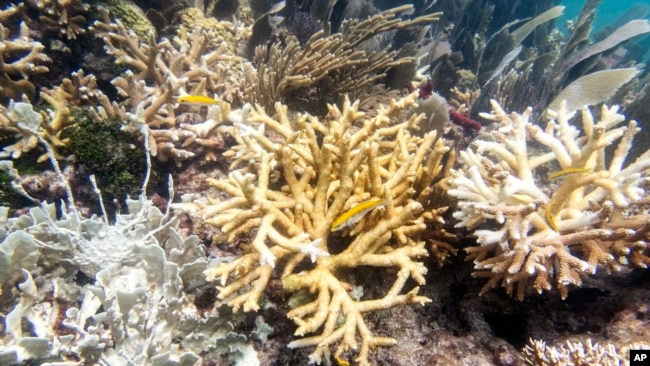
파일 - 마이애미 산호초 퓨처스 랩에서 제공한 이 사진은 2023년 7월 20일 플로리다 키 라르고 해안의 노스 드라이 록스 리프에서 표백, 조직 손실 및 최근 사망률을 가진 불코랄과 사슴뿔 산호를 보여줍니다.
FILE - This photo provided by the University of Miami Coral Reef Futures Lab, shows fire coral and staghorn corals with bleaching, tissue loss, and recent mortality on July 20, 2023, in the North Dry Rocks Reef off the coast of Key Largo, Fla.
"저는 6월에 그들을 보았고 그들은 살아있었습니다. 7월에, 그들은 열 스트레스 때문에 죽기 시작했습니다," 라고 레스네스키가 말했습니다. "그리고 이 시점에서 우리는 호스슈 리프에 있는 야생 집단에서 살아있는 조직 한 조각도 발견하지 못했습니다. 그래서 그것을 보는 것은 매우 어려웠습니다."
"I saw them in June and they were alive. In July, they were starting to die because of the heat stress," Lesneski said. "And at this point we have not even found a patch of living tissue on any of those wild colonies at Horseshoe Reef. So that was very hard to see."
연구팀이 방문한 다섯 개의 암초에서, 그들은 몇몇 야생 산호들이 살아있고 잘 살고 있는 것을 보았다고 레네스키는 말했습니다. 뇌 산호나 바위 산호들이 더 잘 사는 것처럼 보였지만, 여전히 많은 사망자가 있었다고 레네스키는 말했습니다.
In the five reefs the team visited, they did see some wild coral alive and well, Lesneski said. Brain or boulder coral seemed to do better, but still had large amounts of death, she said.
이 연방-민간 합작 프로젝트는 7개 지역에 걸쳐 육지나 바다 양묘장에서 자란 산호 종들을 배치하기 위해 최소 9,700만 달러를 지출할 계획입니다. 일부 종들은 이미 물 속에 있었고 따뜻한 바다로 인해 심하게 상처를 입은 것과 같지만, 일부 종들은 더 마음을 갖기 위해 교배되었다고 레스네스키는 말했습니다. 더 마음을 담은 이 산호들이 더 생존했는지 여부를 말하기는 너무 이르다고 레스네스키는 말했습니다.
The joint federal-private project plans to spend at least $97 million to place coral species grown on land or in ocean nurseries across seven sites. Some of the species are the same as what was already in the water and had been badly hurt by warmer seas, but some had been crossbred to be heartier, Lesneski said. It's too early to tell whether the heartier coral survived more, she said.
레스네스키는 NOAA가 재배지의 수온을 섭씨 34도까지 측정했다고 말했습니다. 그녀와 다른 사람들은 그것이 너무 덥다고 말했습니다.
NOAA measured days of water temperature at the planting sites hitting 34 degrees Celsius, Lesneski said. She and others said that's just too hot.
현재 국제 산호초 협회의 통신부 장관인 은퇴한 NOAA 산호 모니터링 책임자인 마크 이킨은 "2023년에 일어난 일은 완전히 파괴적이었습니다"라고 말했습니다. "그들은 실제로 가능하다고 생각하지 않았던 온도를 보고 있었습니다."
"What happened in 2023 was absolutely devastating," said retired NOAA coral monitoring chief Mark Eakin, who now is corresponding secretary for the International Coral Reef Society. "They were actually seeing temperatures that they didn't think were possible."
작년 기록적인 높은 수온 동안 카리브해 산호초가 황폐화되었지만, "2023년은 다른 세계에서 우리가 우려했던 것만큼 나쁘지 않았습니다."라고 Eakin은 말했습니다.
While the Caribbean coral reefs were devastated during the record high water temperatures last year, "2023 wasn't as bad as we feared in the rest of the world," Eakin said.
이달 초, NOAA는 악화되는 기후 변화로 인해 산호초 경계 시스템을 수정하여 새로운 높은 수준의 열 스트레스 범주를 추가했습니다. 이는 허리케인에 범주 6을 추가하는 것과 동일하다고 Lesneski는 말했습니다.
Earlier this month, NOAA revised its coral reef watch alert system to add new higher level of heat stress categories because of worsening climate change. It's the equivalent of adding a Category 6 to hurricanes, Lesneski said.
Eakin과 University of Victoria 산호 생물학자 Julia Baum는 이것이 산호를 너무 더워지는 물에 다시 넣음으로써 산호초를 다시 벌충하려는 것에 대한 정당한 우려를 제기한다고 말했습니다.
Eakin and the University of Victoria coral biologist Julia Baum both said this raises legitimate concerns about trying to repopulate coral reefs by putting the coral back in water that is just getting too warm.
바움은 이메일에서 "산호 복원은 기후 변화로 인해 거의 틀림없이 실패할 운명입니다,"라고 말했습니다. "오늘날 뜨거운 바다에서 산호 복원을 시도하는 것은 집이 여전히 불에 타고 있는 동안 집을 다시 개조하려는 것과 같습니다."
"Coral restoration is almost certainly doomed to fail under climate change," Baum said in an email. "Attempting coral restoration in today's hot oceans is like trying to refurnish a house while it's still on fire."
바움은 "우리의 바다는 지금 산호들에게 위험할 정도로 뜨겁고 기후 변화 때문에 계속 더워지고 있습니다," 라고 말했습니다.
"Our oceans are now dangerously hot for corals and continuing to heat up because of climate change," Baum said.
레스네스키는 그러한 우려를 이해하고 있으며 연구원들은 더 많은 내열 산호를 번식시키기 위해 무엇을 할 수 있는지 알아보려고 한다고 말했습니다.
Lesneski said she understands that concern and researchers are looking to see what they could do to breed more heat-resistant coral.
"그것은 희망사항이 아닙니다," 라고 레스네스키가 말했습니다. "세계적으로 화석 연료에서 파생되는 배출량을 줄여야 하며, 주요 정책 변화가 있어야 합니다. 하지만 현재로서는, 우리가 암초의 경제적 또는 생태학적인 이익을 얻고 싶다면, 우리는 보존하고, 훌륭한 관리자가 되고, 우리가 할 수 있는 정도로 복구하기 위해 최선을 다해야 합니다."
"It's not a silver bullet," Lesneski said. "There has to be global reductions in fossil fuel derived emissions, major policy changes. But for now, if we want to have any of the economic or ecological benefits of reefs, we do have to do our best to conserve, be good stewards and restore to the degree we can."
출처 : VOANews
댓글목록 0
등록된 댓글이 없습니다.


